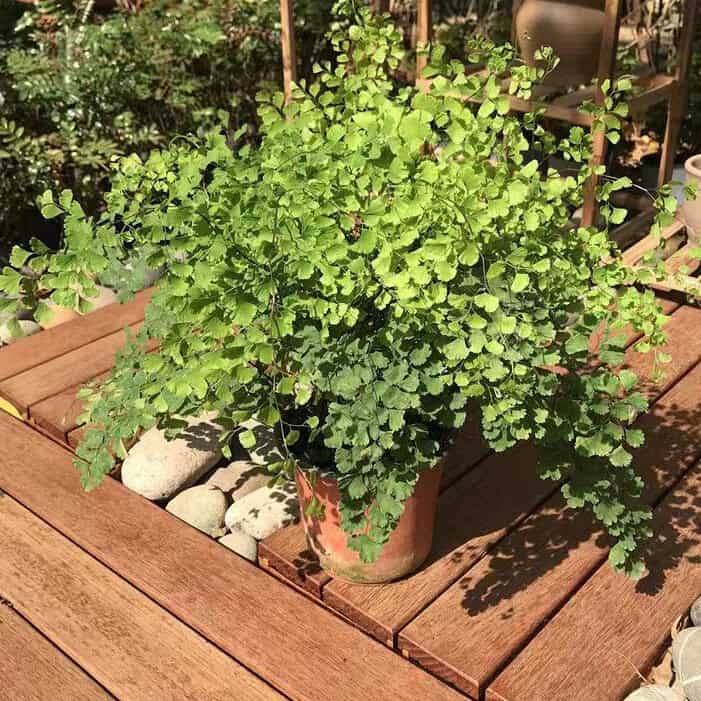Unlike other types of plants, Adiantum capillus veneris has a unique shape. Its common name is Southern maidenhair fern. This plant grows to a height of about 30 centimeters to 50 centimeters. Its leaves have tiny structures that relate to one another. This plant is used for many different cures.
It’s not surprising that a small plant can cure various human diseases. Scientists have been able to find proof that this plant can help treat ailments such as asthma and hair fall. If you’re planning on growing this plant in your garden, there are a few requirements that you need to know.

Adiantum Capillus-Veneris Care
Sunlight
Like other plants, the Adiantum capillus requires at least a certain amount of sunlight. However, excessive sunlight can destroy this plant. If you’re going to keep it indoors, you might want to consider keeping it by the window to ensure that it receives the necessary sunlight.
If your plant is outside, it’s important that it’s kept in a semi-shaded area to avoid direct sunlight. However, some people might mistakenly believe that this practice means that they have to protect their plants from the sun.
Since you have no knowledge about how to properly care for this plant, it can turn into an old, dark-colored plant that nobody will like. To ensure that this plant will look its best, you should regularly light it.
Soil
The soil is an important component of a successful Adiantum capillus veneris plant. It’s important that it has the ability to drain the water, which means that it should be able to do so easily. This can prevent the water from getting stuck on the soil and causing problems such as root rot. Having rich and well-draining soil will also help prevent the plant from experiencing other issues.
Water
When it comes to watering your Adiantum capillus veneris, the humidity level will determine how much water you’ll be able to provide. The higher the humidity, the less water you’ll be able to give the plant. In general, plants require around a normal amount of water.
One of the most important factors that you should consider when it comes to maintaining a balanced water cycle for your Adiantum capillus veneris plant is the amount of water that it receives. This can prevent it from over-watering. It’s also important to keep in mind that skipping a couple of days of water can severely affect the plant.
Temperature and Humidity
Although there’s no specific requirement for the temperature or humidity of Adiantum capillus veneris, it’s important to keep in mind that these factors should be taken into account when it comes to growing this plant.
Generally, Adiantum capillus veneris can tolerate temperatures ranging from 20 to 35 degrees Celsius. If you’re planning on growing this plant in harsh weather conditions, such as during summers or winters, you might want to keep it indoors. This can prevent it from developing frostbite and burning.
Although humidity can affect the growth of Adiantum capillus veneris, it’s not a major issue for this plant. In areas with high humidity levels, it’s important to monitor the watering cycle to ensure that the roots are getting enough water.
Fertilizer
One of the most common factors that can affect the growth of Adiantum capillus veneris is the amount of fertilizer that it receives. This is because the fewer nutrients that it receives, the more it will thrive. Unfortunately, over-feeding Adiantum capillus veneris can lead to other issues, such as root rot. One of the best times to give this plant fertilizer is during the spring and summer.
Propagate
As the Adiantum capillus veneris is a beautiful fer, propagating it would be wonderful.
Propagation can be carried out by removing one of the plant’s roots and planting it in a different pot with the nutrients that it requires. You should also use fertilizer once the plant has established a healthy root system.
Pests Diseases and Plant Diseases
Although pests such as aphids and aphelenchoides are not fond of your Adiantum capillus veneris, they can still be managed by using a soapy solution. Be careful, however, as the excess of the solution can damage the leaves.
Blackroot and root rot are two of the most common plant diseases that can affect plants. When the water and humidity levels are high, the roots become so wet that they can’t function properly.
Bottom Line
Before you start growing Adiantum capillus veneris, it’s important that you have a good understanding of the various requirements that it requires to grow successfully. This plant is an amazing addition to your garden and requires minimal care.




